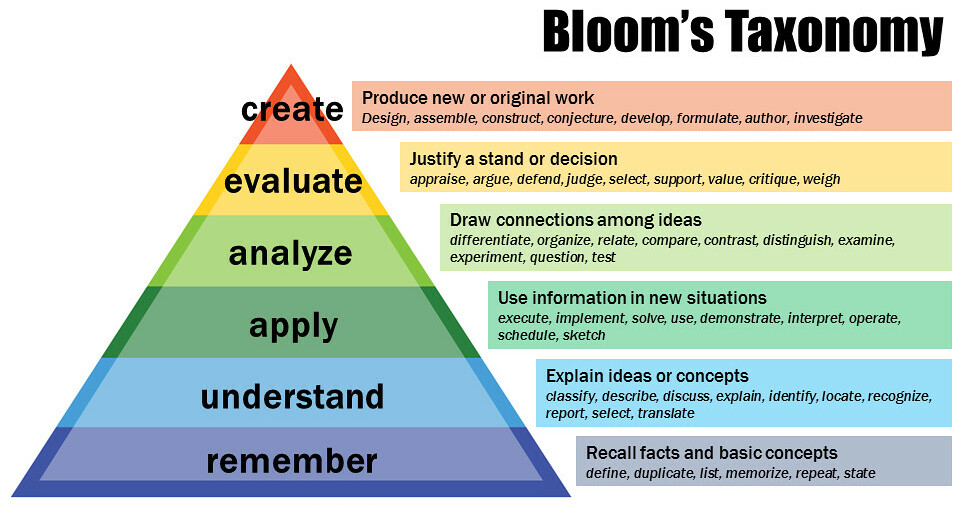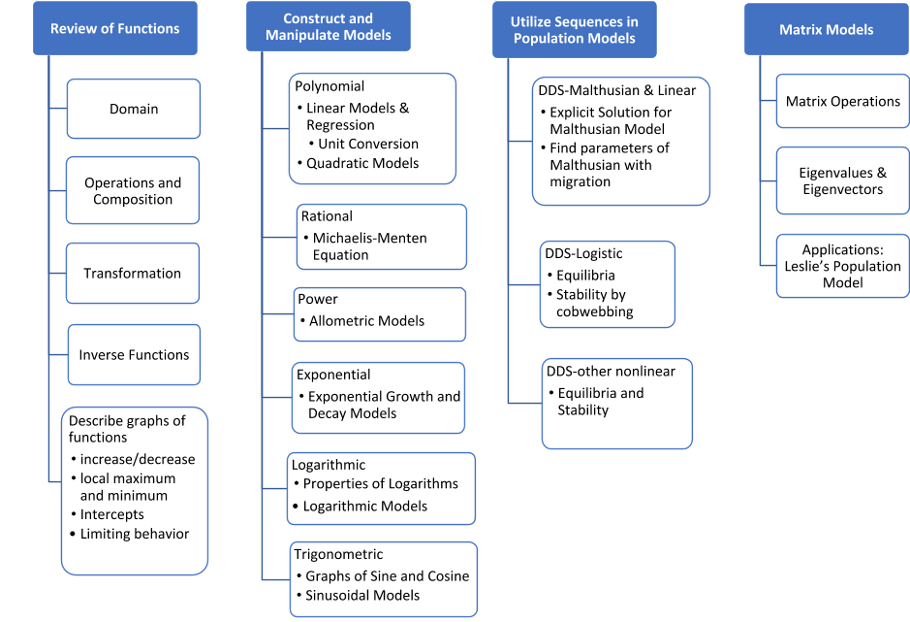S1: Difference between revisions
Corinbowen (talk | contribs) mNo edit summary |
mNo edit summary |
||
| Line 1: | Line 1: | ||
= ''[[Structure]]'' S1: Provides clear goals/outcomes = | = ''[[Structure]]'' S1: Provides clear goals/outcomes = | ||
Great structure starts with clear goals. It is a good idea to review the learning goals of the course to ensure that they are clear, measurable and generate significant learning experiences. There are many tools available for instructors to use to design the learning goals and outcomes. Here we recommend one (L.D. Feek, Creating Significant Learning Experiences) that help instructors to design learning goals in six categories: fundamental knowledge, application, integration, learning skills, caring, and human dimension. You can view a summary [https://www.wcu.edu/WebFiles/PDFs/facultycenter_SignificantLearning.pdf here]. | Great structure starts with clear goals. It is a good idea to review the learning goals of the course to ensure that they are clear, measurable and generate significant learning experiences. There are many tools available for instructors to use to design the learning goals and outcomes. Here we recommend one (L.D. Feek, Creating Significant Learning Experiences) that help instructors to design learning goals in six categories: fundamental knowledge, application, integration, learning skills, caring, and human dimension. You can view a summary [https://www.wcu.edu/WebFiles/PDFs/facultycenter_SignificantLearning.pdf here]. | ||
[[File:Bloom' | [[File:Bloom's_Revised_Taxonomy.jpg|center|frame]] | ||
After developing the learning goals/outcomes, it is good to articulate them with your students. The following are examples of using Bloom’s Taxonomy or a visual graph to explain the learning goals/outcomes: | After developing the learning goals/outcomes, it is good to articulate them with your students. The following are examples of using Bloom’s Taxonomy or a visual graph to explain the learning goals/outcomes: | ||
| Line 11: | Line 11: | ||
* Provide a visual syllabus. Here is an example: | * Provide a visual syllabus. Here is an example: | ||
[[File:VisualSyllabus.png|alt= | [[File:VisualSyllabus.png|alt=|Example of a Visual Syllabus|center|frame]] | ||
=== Observable Behaviors: === | === Observable Behaviors: === | ||
[[S1.1|S1.1: | [[S1.1|S1.1: Provides purpose and learning outcomes of the lesson]] | ||
[[S1.2|S1.2: | [[S1.2|S1.2: Places the lesson into the overall arc of the course]] | ||
[[S1.3|S1.3: | [[S1.3|S1.3: Gives clear instructions on activities and assignments and tied them to student learning outcomes]] | ||
Revision as of 16:40, 8 August 2022
Structure S1: Provides clear goals/outcomes
Great structure starts with clear goals. It is a good idea to review the learning goals of the course to ensure that they are clear, measurable and generate significant learning experiences. There are many tools available for instructors to use to design the learning goals and outcomes. Here we recommend one (L.D. Feek, Creating Significant Learning Experiences) that help instructors to design learning goals in six categories: fundamental knowledge, application, integration, learning skills, caring, and human dimension. You can view a summary here.
After developing the learning goals/outcomes, it is good to articulate them with your students. The following are examples of using Bloom’s Taxonomy or a visual graph to explain the learning goals/outcomes:
- Develop measurable learning outcomes using Bloom’s Taxonomy, which is a system that divides analytical tasks and learning into different levels of difficulty. This link provides an overview of the original and revised taxonomies, as well as a list of action verbs.
- Another resource for Overview and history of Bloom’s taxonomy, with revisions, is here.
- Here, you can find a nice listing of the different levels. This is useful for math/engineering tasks.
- Use action verbs to describe desired student activities.
- Provide a visual syllabus. Here is an example:
Observable Behaviors:
S1.1: Provides purpose and learning outcomes of the lesson

